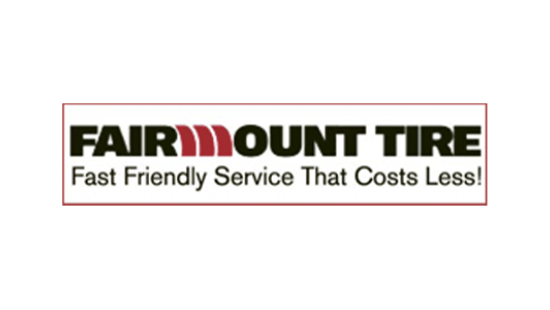What Drives the Cost of Route Planning Software?
In today’s lightning-fast-paced world where customers continue to expect more, efficient vehicle route planning is crucial for last mile logistics companies. Whether you run a small local delivery service or oversee a fleet of trucks for a large corporation, the right route planning software can greatly enhance your operations.
But one of the big concerns for businesses is the cost. What drives the cost of vehicle route planning software, and how can you make an informed decision when investing in such a crucial tool? If these are questions you’ve been pondering or were about to ask, we have the answers in this in-depth article.

In this Article:
- Feature Set
- Scalability and Performance
- Integration Capabilities
- Geographic Capabilities
- Licensing and Deployment Model
- Market Demand and Competition
- Vendor Reputation, Support & Maintenance
- Additional Services
8 Top Factors that Impact Route Planning Software Cost
1. Feature Set
A route planning software package's price is greatly influenced by the variety of functions it provides. Essential elements like route optimization and real time tracking may be included in basic packages, while more sophisticated bundles may offer capabilities like geofencing, predictive analytics, and dynamic rerouting. The cost increases as the feature set becomes more extensive.
Tip: Consider your company's requirements carefully when you compare various route planning software options. Purchasing software that has unnecessary features can cause prices to increase unnecessarily. On the other hand, selecting a software package lacking functionality may impede your operations and end up costing you more in the long run.
2. Scalability and Performance
The scalability and performance of a route planning software solution is another crucial factor influencing its price. Software designed to handle large-scale networks, high order volumes, and short optimization timeframes tends to cost more. When it comes to scaling to accommodate business growth, some software providers offer tiered pricing models based on the number of vehicles or users, allowing you to start with a smaller package and expand as your requirements evolve.
Tip: Think about your company's current size and growth projections when selecting a software solution. While it may be tempting to choose a cheaper, less scalable option initially, this could lead to costly migrations or software replacements down the road.
3. Integration Capabilities
Route planning software is most effective when seamlessly integrated with other business systems such as fleet management software, customer relationship management (CRM) tools, and inventory management systems. The price of the software may be influenced by the simplicity of integration and the availability of pre-built connectors or application programming interfaces (APIs).
Tip: Investing in a software solution with robust integration capabilities may have a higher upfront cost but can save you time and money in the long term by streamlining your operations and reducing manual data entry.
INDUSTRY WHITE PAPER
Rethinking Route Optimization
When evaluating route planning software, it is important to ensure you validate that route optimization capabilities cover all of your use cases. Download this white paper to learn how your company can become more flexible and productive.
4. Geographic Capabilities
The cost of route planning software is also influenced by the geographic scope of your operations. If your company is regionally focused, you might be able to find more lower-priced choices. However, you may need a software solution that offers extensive worldwide mapping and routing capabilities if you have a larger national or international presence, which could be more expensive.
5. Licensing and Deployment Model
The licensing and deployment model used by the software vendor can affect its price. Factors such as the number of users or devices, concurrent connections, the number of vehicles, deliveries, and stops, or the scale of deployment can influence the pricing structure.
Pricing can be structured in various ways, including one-time purchases, monthly subscriptions, or usage-based pricing. Each licensing model has its advantages and disadvantages. For instance, monthly subscriptions can offer flexibility and lower upfront costs, but they might accrue more costs over time. Companies with available capital and wanting to reduce ongoing costs can consider licensing the solution and then paying ongoing maintenance, which is a fraction of the initial purchase price. Licensing does not preclude a hosting agreement with the vendor.
6. Market Demand and Competition
The competitiveness of the market and market dynamics affect vehicle routing software pricing. A vendor may have more freedom to set higher pricing if there are few rivals who offer comparable features, which is likely to be the case in several industries. On the other hand, prices might be more competitive in a market with lots of choices and intense competition.
7. Vendor Reputation, Support, and Maintenance

The degree of maintenance and customer service offered by the software vendor may impact the overall cost. It can be helpful to make use of the training resources, regular software updates, and 24/7 customer support that certain providers offer to get the most out of the solution. Also, established vendors with a strong reputation in the logistics industry may charge higher prices for their routing software due to the perceived value and trust associated with their brand.
Tip: Although it could be tempting to opt for minimal support and maintenance to save money, think about the long-term effects of any potential downtime or technical concerns. Investing in software with strong support can reduce disruptions and ultimately result in cost savings.
8. Additional Services
Routing software providers may offer additional services, such as training, consulting, customization, or integration with other network management tools. These value-added services can influence the overall price of the software.
Conclusion
In summary, there are many route planning solutions accessible from different providers, making the pricing environment for routing software a complex terrain. This variability emphasizes how crucial it is for any logistics provider attempting to optimize its routing operations to give everything careful thought and review.
It is essential to approach the selection process with caution and accuracy given the large cost consequences and the crucial role that routing plays in running an efficient operation that keeps customers happy and coming back.
Turn to experience and advanced routing technology for your unique business needs. Descartes is well-equipped with industry expertise and a proven track record to assist your business in selecting the ideal route planning, optimization, and dispatch solutions for enhancing operational performance and customer experience. Contact one of our solutions experts today to explore your options further.
Solution Highlight
Route Planning, Optimization & Dispatch
Fleet Resource Center
Expand Your Routing, Mobile & Telematics Knowledge
Recommended For You



